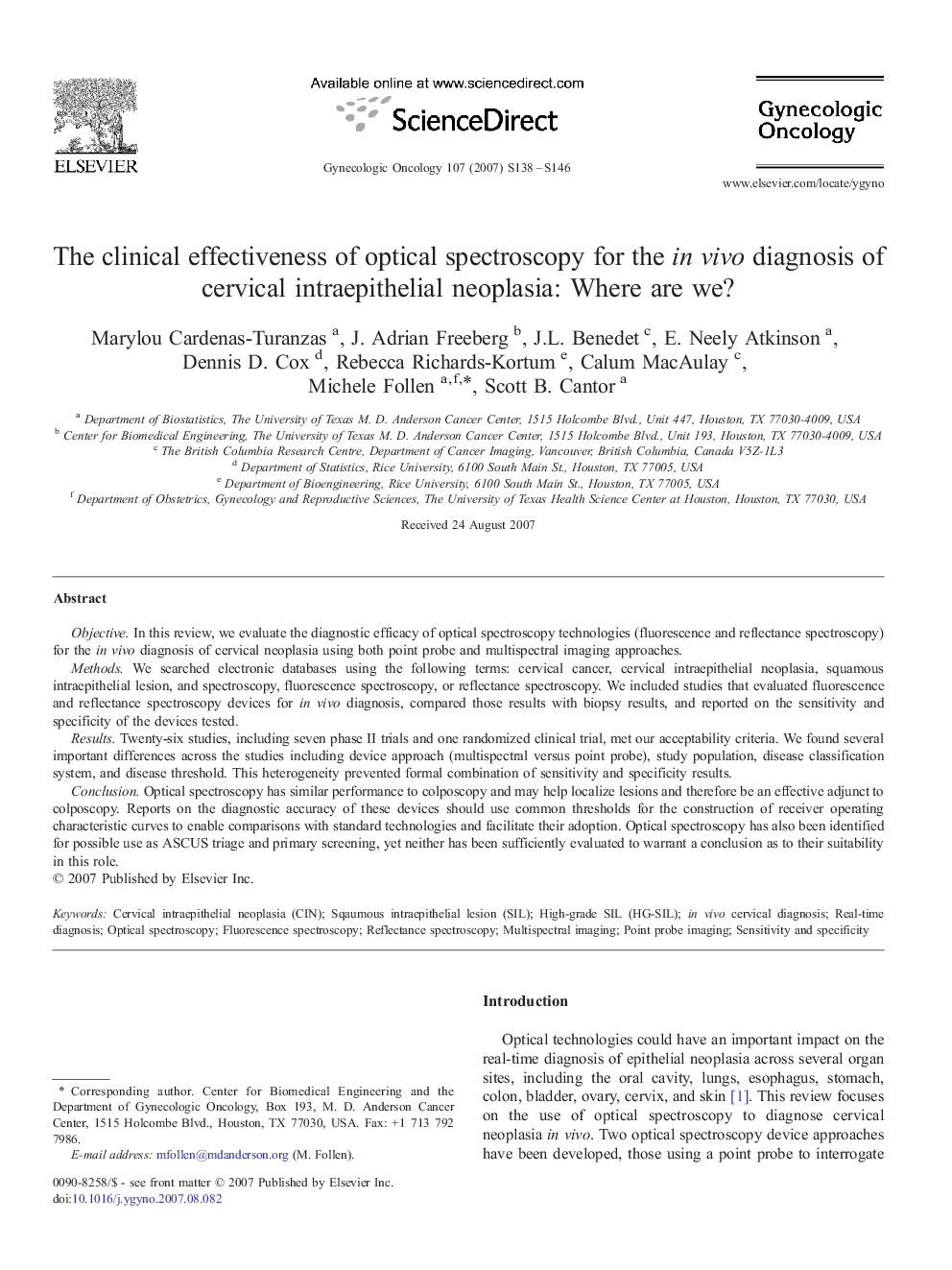| Article ID | Journal | Published Year | Pages | File Type |
|---|---|---|---|---|
| 3946318 | Gynecologic Oncology | 2007 | 9 Pages |
ObjectiveIn this review, we evaluate the diagnostic efficacy of optical spectroscopy technologies (fluorescence and reflectance spectroscopy) for the in vivo diagnosis of cervical neoplasia using both point probe and multispectral imaging approaches.MethodsWe searched electronic databases using the following terms: cervical cancer, cervical intraepithelial neoplasia, squamous intraepithelial lesion, and spectroscopy, fluorescence spectroscopy, or reflectance spectroscopy. We included studies that evaluated fluorescence and reflectance spectroscopy devices for in vivo diagnosis, compared those results with biopsy results, and reported on the sensitivity and specificity of the devices tested.ResultsTwenty-six studies, including seven phase II trials and one randomized clinical trial, met our acceptability criteria. We found several important differences across the studies including device approach (multispectral versus point probe), study population, disease classification system, and disease threshold. This heterogeneity prevented formal combination of sensitivity and specificity results.ConclusionOptical spectroscopy has similar performance to colposcopy and may help localize lesions and therefore be an effective adjunct to colposcopy. Reports on the diagnostic accuracy of these devices should use common thresholds for the construction of receiver operating characteristic curves to enable comparisons with standard technologies and facilitate their adoption. Optical spectroscopy has also been identified for possible use as ASCUS triage and primary screening, yet neither has been sufficiently evaluated to warrant a conclusion as to their suitability in this role.
